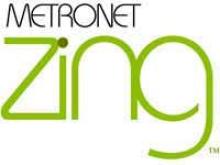Broadband for Schools and Libraries on the Agenda at Oct. 1 SHLB Event
The Schools, Health & Libraries Broadband Coalition (SHLB) will present a webcast via BroadbandUS.TV tomorrow, October 1. The event focuses on broadband in schools and libraries. The webcast, titled The Importance of High-Capacity Bandwidth for Schools and Libraries runs from 9:30 a.m. to 3:30 p.m. ET.
Presenters from schools, libraries, vendors, and broadband coalitions will address some of the issues most pressing for schools and libraries. The discussions provide a special emphasis on E-rate as the FCC reviews the program during the current Notice of Proposed Rule Making [PDF]:
Panel #1: How Can the E-rate Program Support High Capacity Broadband?
Panel #2: Wireless and Internal Connections; What Options Are Available to Bring Broadband into the Classroom and Out to the Community?
Panel #3: How can the E-rate Program be Strengthened for the Long-Term?
In addition to panel discussion, Tom Power, Deputy Chief Technology Officer for Telecommunications, Office of Science and Technology, Executive Office of the President, will speak.
Register here for the event. (There is a charge to attend whether in person or by stream.)



